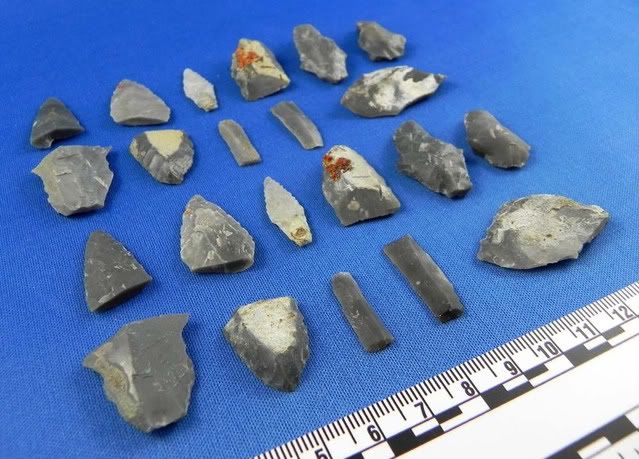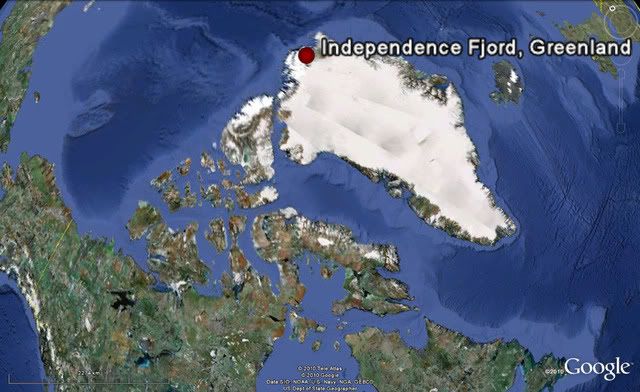T
Tim Rast
Guest
I'm an archaeologist working in the Canadian Arctic and sub-Arctic. My specialty is flintknapping and making reproductions of artifacts. I recently completed a set of reproductions of stone tools from very early sites on Ellesmere Island (photo below). The tiny artifacts belong to a culture called Independence I. They were the first people to live in the High Arctic and Northern Greenland, between about 4400 and 3300 years ago. Based on where these sites are located and the sorts of features and artifacts that we find at them, archaeologists think that these people spent their winters in a kind of semi-hibernation.
I'm interested in the Bushcraft community's insight on that idea.
Maybe a little background would help. The Independence I people were part of a group called the Palaeoeskimos, who lived in the Arctic before the Inuit arrived in the Eastern Arctic within the last 1000 years. We find their sites in locations that were not considered habitable by the Inuit and the Independence I people seem to have had a very different way of life.
They didn't have semi-subterranean houses for the winter and there's no evidence for snow houses (the tools to make them aren't found at their sites), instead they lived in above ground tents. They didn't make soapstone lamps to burn seal oil, instead they made open fires in box hearths and relied on small plants and driftwood for fuel. They made relatively little use of marine mammals, instead they specialized in muskox hunting.
This sort of evidence has led archaeologists to the conclusion that conserving heat would have been the primary winter activity during the months of darkness. Its been speculated that food and fuel in the winter months would have been so scarce that people spent most of that time indoors, living off summer cached food and trying to maintain body heat through inactivity. There probably have been lots of storytelling, singing and games, but for the most part they would have made it through the winter sleeping and dreaming in a kind of semi-hibernation.
There's a much more complete discussion of this concept in Ancient People of the Arctic by Bob McGhee, where he describes a way of life that is "well beyond the bounds of endurance known from any human group described by anthropologists or historians."
What are your thoughts and reactions? The idea is partly supported by stories of white trappers living in North Canada who would spend much of the winter dreaming. Could you imagine living like this and raising a family in this place? Is there another explanation that is more likely?
These are Independence I artifacts from northern Ellesmere Island (back two rows) and reproductions that I made (front two rows).

Independence Fjord - the location of the type site for this culture.

I'm interested in the Bushcraft community's insight on that idea.
Maybe a little background would help. The Independence I people were part of a group called the Palaeoeskimos, who lived in the Arctic before the Inuit arrived in the Eastern Arctic within the last 1000 years. We find their sites in locations that were not considered habitable by the Inuit and the Independence I people seem to have had a very different way of life.
They didn't have semi-subterranean houses for the winter and there's no evidence for snow houses (the tools to make them aren't found at their sites), instead they lived in above ground tents. They didn't make soapstone lamps to burn seal oil, instead they made open fires in box hearths and relied on small plants and driftwood for fuel. They made relatively little use of marine mammals, instead they specialized in muskox hunting.
This sort of evidence has led archaeologists to the conclusion that conserving heat would have been the primary winter activity during the months of darkness. Its been speculated that food and fuel in the winter months would have been so scarce that people spent most of that time indoors, living off summer cached food and trying to maintain body heat through inactivity. There probably have been lots of storytelling, singing and games, but for the most part they would have made it through the winter sleeping and dreaming in a kind of semi-hibernation.
There's a much more complete discussion of this concept in Ancient People of the Arctic by Bob McGhee, where he describes a way of life that is "well beyond the bounds of endurance known from any human group described by anthropologists or historians."
What are your thoughts and reactions? The idea is partly supported by stories of white trappers living in North Canada who would spend much of the winter dreaming. Could you imagine living like this and raising a family in this place? Is there another explanation that is more likely?
These are Independence I artifacts from northern Ellesmere Island (back two rows) and reproductions that I made (front two rows).

Independence Fjord - the location of the type site for this culture.

Last edited by a moderator:

 , and for fuel, well, their droppings burn well (prairie coals) and so do their bones.
, and for fuel, well, their droppings burn well (prairie coals) and so do their bones. A hot horn spoon has the kind of smell that's never forgotten.
A hot horn spoon has the kind of smell that's never forgotten.